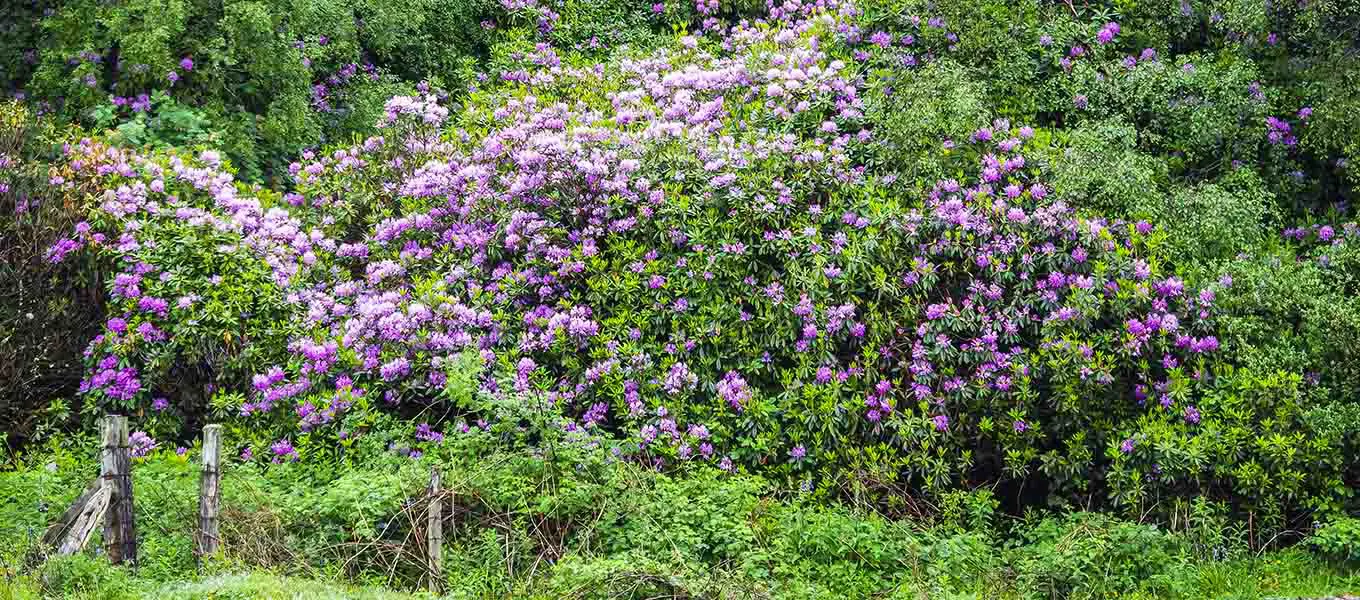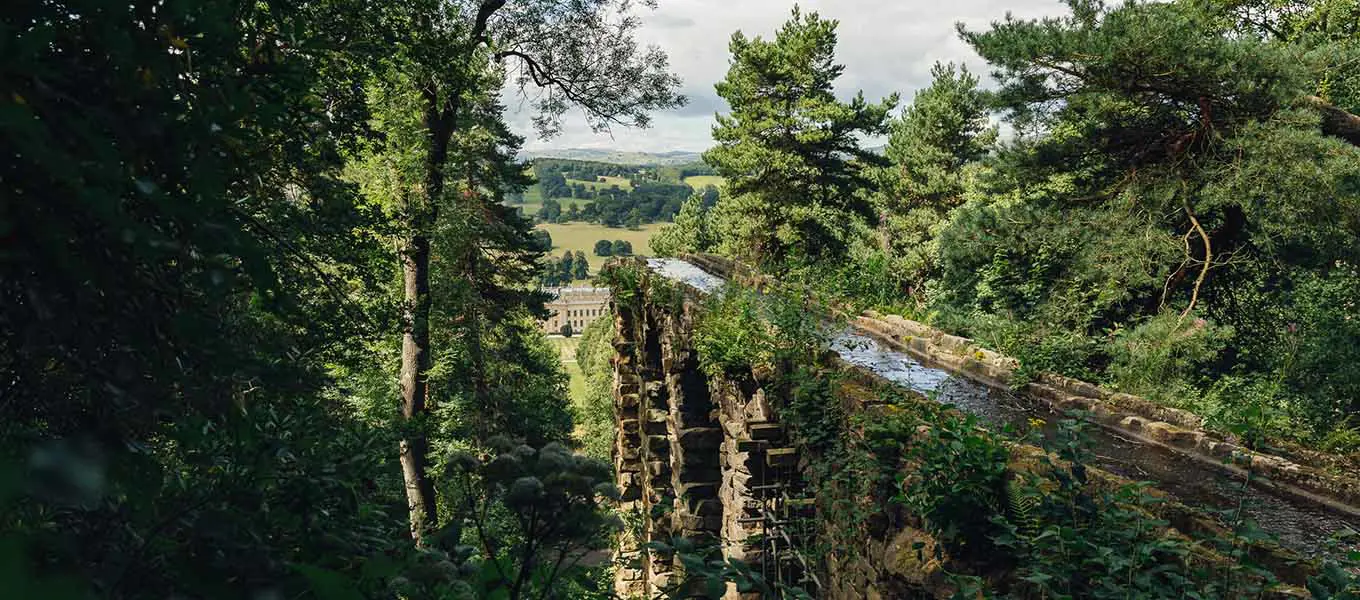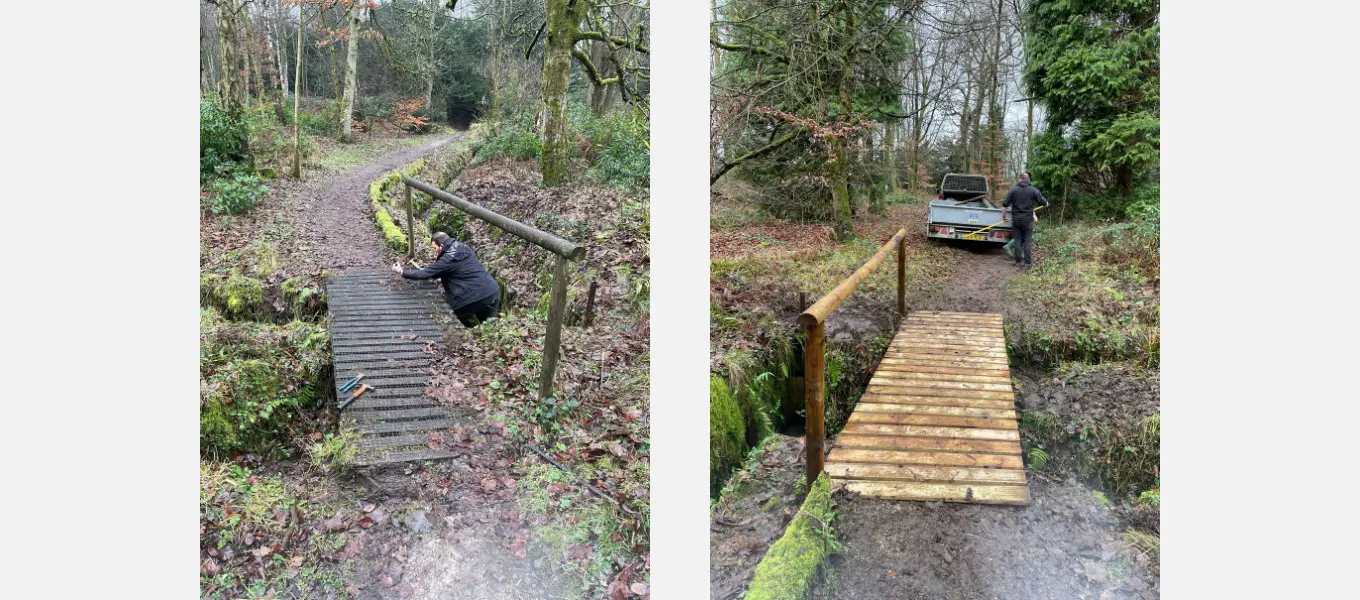Managing invasive species
Throughout the year, Chatsworth’s landscaping team manages a number of different plant species across the estate due to their invasive, non-native, or destructive natures. Winter is no different, and it’s during these months that, alongside the Chatsworth Forestry and Arboriculture team, they tackle one of the UK’s most beautiful but invasive, non-native species, Rhododendron ponticum.

Native to the Mediterranean and Asia, Rhododendron ponticum was introduced to the UK in the 19th century due to its beautiful spring flowers, and because it provides excellent cover for game birds. Compared to other species of the Rhododendron family, ponticum is highly invasive; it spreads through an abundant production of seeds and via its stems which root when they touch the soil. The plant can live for decades, if not longer, and is incredibly hardy.
The primary issue with ponticum is the damage it causes to ecosystems. It can out-compete other native species of flora and fauna by blocking out sunlight before it reaches the forest floor. This creates a species monoculture, causing habitats to lose all biodiversity and eventually leading to the destruction of the entire ecosystem.
Before and after, clearing overgrown Rhododendron ponticum in Stand Wood
Ponticum was introduced to Stand Wood several centuries ago and each year the landscape team undertakes an annual cut-back using chainsaws and loppers. The remaining stump is treated and ‘off-cuts’ are removed in line with the Wildlife and Countryside Act 1981, which dictates that any waste material must be disposed of responsibly to minimise the risk of spreading.
Once the invasive plants have been removed, it’s alarming to see how devoid of any other species an area has become, showing just how much damage ponticum can cause if neglected. Thankfully, the woodland is quick to recover. Previously cleared areas have sprung back to life, blooming with a diverse mixture of species endemic to a woodland, such as bluebells, foxgloves, and sedges; an increase in biodiversity that benefits the ecosystem and improves the overall health of the woodland.

Keeping Paxton’s historic waterworks running
During the colder months of the year, the team takes a much more regular approach to managing water entering the landscape.
The water features in Chatsworth Garden are fed by a series of streams that channel rainfall off the moors behind the house. The water flows into the Emperor Lake and Ring Pond, down the hillside through Stand Wood and the aqueduct, through the garden, and then into the river Derwent.
Over autumn, the team ensured that these streams were clear of vegetation and fallen leaves to maintain a constant flow and reduce the likelihood of flooding. Naturally, throughout winter, there is an abundance of water available, sometimes too much. Often, following heavy rainfall, snowmelt, or prolonged wet periods, there is simply too much water for the capacity available in the lakes or to send through the garden water features. The team will then divert the water through the turbine that generates power for Chatsworth House. If there is still too much water, it can be diverted directly to the river by the opening or closing of a system of sluice gates, which change the direction of the flow of the streams.
Infrastructure maintenance
The wet and windy winter weather creates a long list of general maintenance tasks for the team.
High winds increase the number of fallen trees or branches that need to be cleared as they can often land on and damage boundary fences or walls, and pathways and block the roads used around the estate.

It is the landscape team’s responsibility to manage the impact of these fallen trees to ensure the safety of visitors and members of staff whilst they are at Chatsworth. This can involve safely felling any trees or branches not fully down, moving large trees using a tractor-mounted winch, and cutting up material with a chainsaw for removal; the logs are used to feed the fire in the north front visitor entrance to Chatsworth House. Any damage caused to infrastructure is repaired to ensure that roads and pathways are safe to use and livestock is secured.
When the weather is incredibly wet, the team clears out drains around the car park and surrounding villages to remove any stone material or fallen leaves that have washed off the car park, road surfaces, or hillsides.

When the temperature drops to below freezing, the team heads out early to spread grit and salt on the roads leading to the house and car park, and the farm shop. They undertake this service in other areas of the estate, such as the surrounding villages and Chatsworth’s self-catering holiday cottages.
In the event of snow, their trusty tractor has a snow plough attachment and, armed with shovels, they’ll clear all roads and pathways across the estate to ensure they are as safe as possible to travel on.
Working in the landscape team means working outdoors throughout the year, even when it’s -8°C!
Find out more about Chatsworth’s parkland and the wider estate.
View suggested walks in Stand Wood and across the estate.






